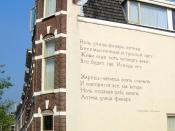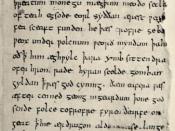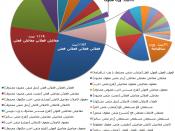The initial observation is that both poems contain connotations of nature, Death of a Naturalist focuses on frogs and First sight on Lambs. Both contain two stanzas, however the structure is not as standard in Death of a Naturalist as it contains a stanza of 21 lines followed by one of 12 whereas First sight has two stanzas of 7 lines.
There are images of winter and death present in First Sight, "Meet a vast unwelcome, know nothing but a sunless glare". The title itself suggests a tone of unknowing and uneasiness. The animals were used to convey personal experience in a non-literal sense, for example the lamb is the symbol of life in its dead surroundings. First Sight is constructed with the rhyming structure of A, B, A, B, A, C, C. The 'C, C' is a rhyming couplet present at the end of each verse, this adds emphasis to these lines.
Heaney's poem doesn't contain any rhyming structure simply due to the fact his lines do not rhyme. His poem uses the attitudes of a young boy though it is an older and wiser narrator reminiscing. You assume the boy was brought up with nature on a farm in the countryside. He speaks of learning the facts of life through his teacher, "Miss Walls would tell us how the daddy frog was called a bullfrog and how he croaked and how the mammy frog laid hundreds of little eggs and this was frogspawn." The use of language is that of a child's in the previous quote, by using the word "and" twice shows the excitement that this boy had towards nature.
In both poems the second stanza confirms the loss of excitement and betrayal through life. Death of a Naturalist begins with the word "then" implying the...


